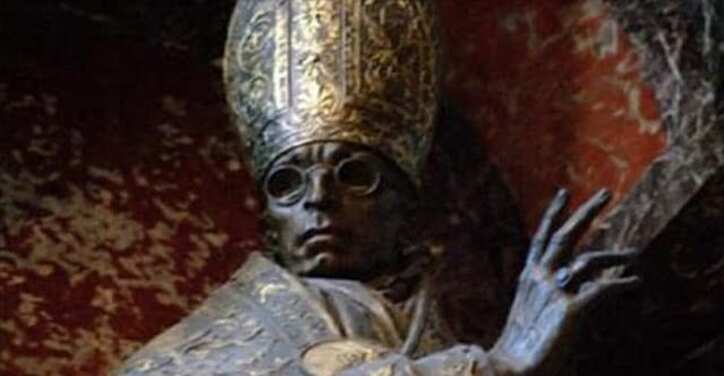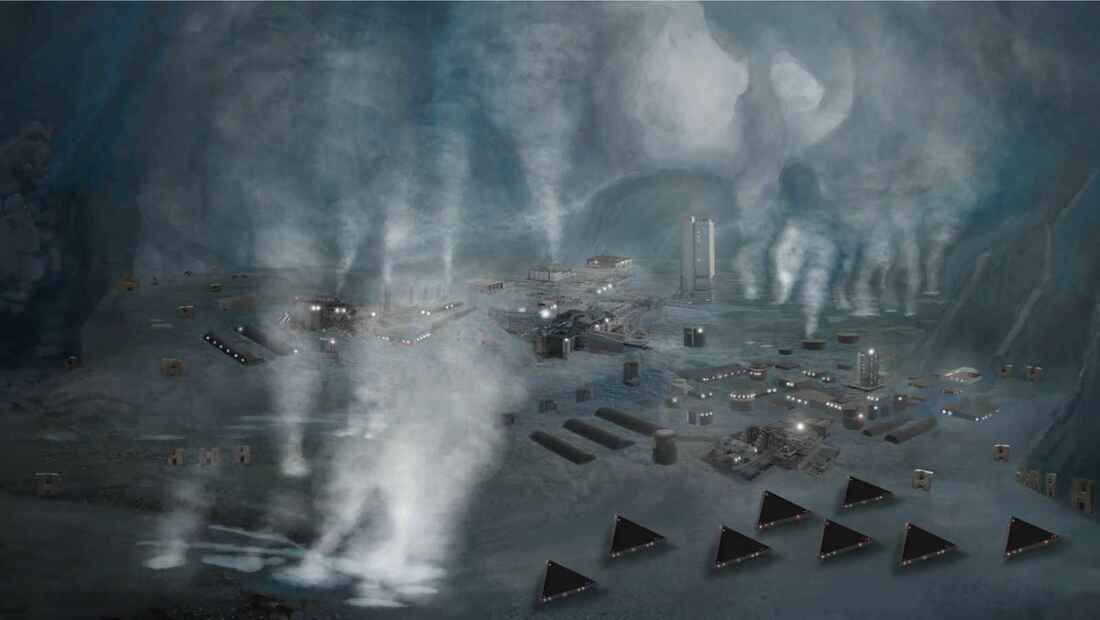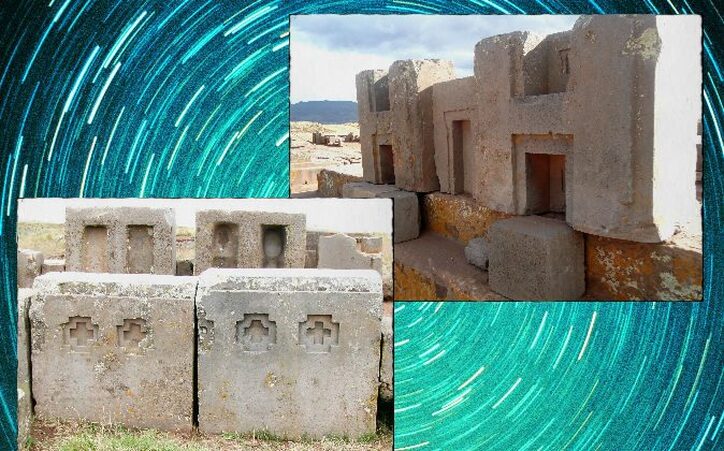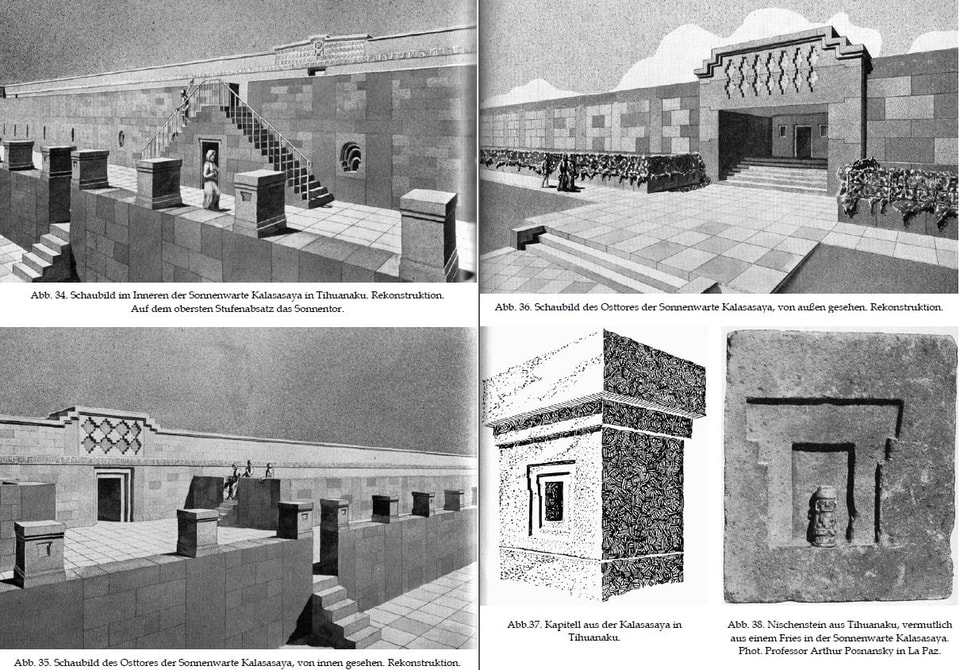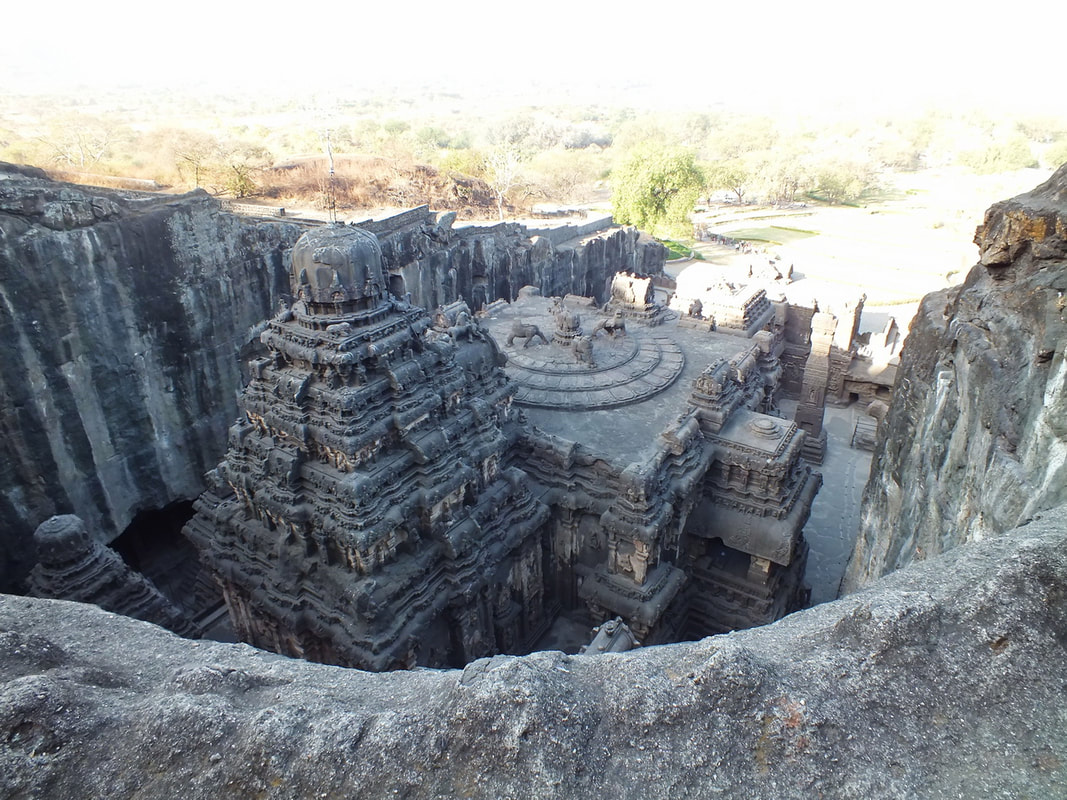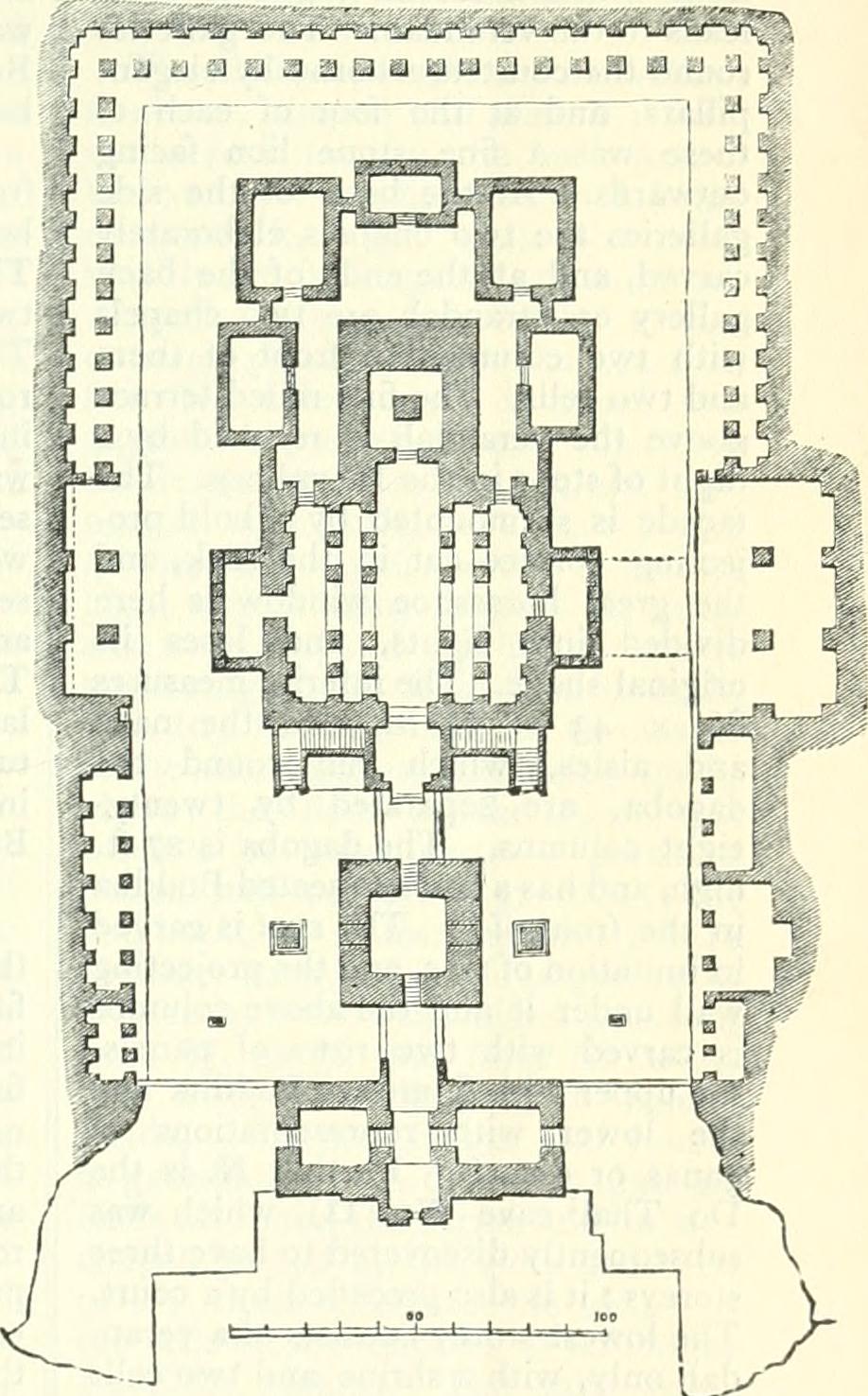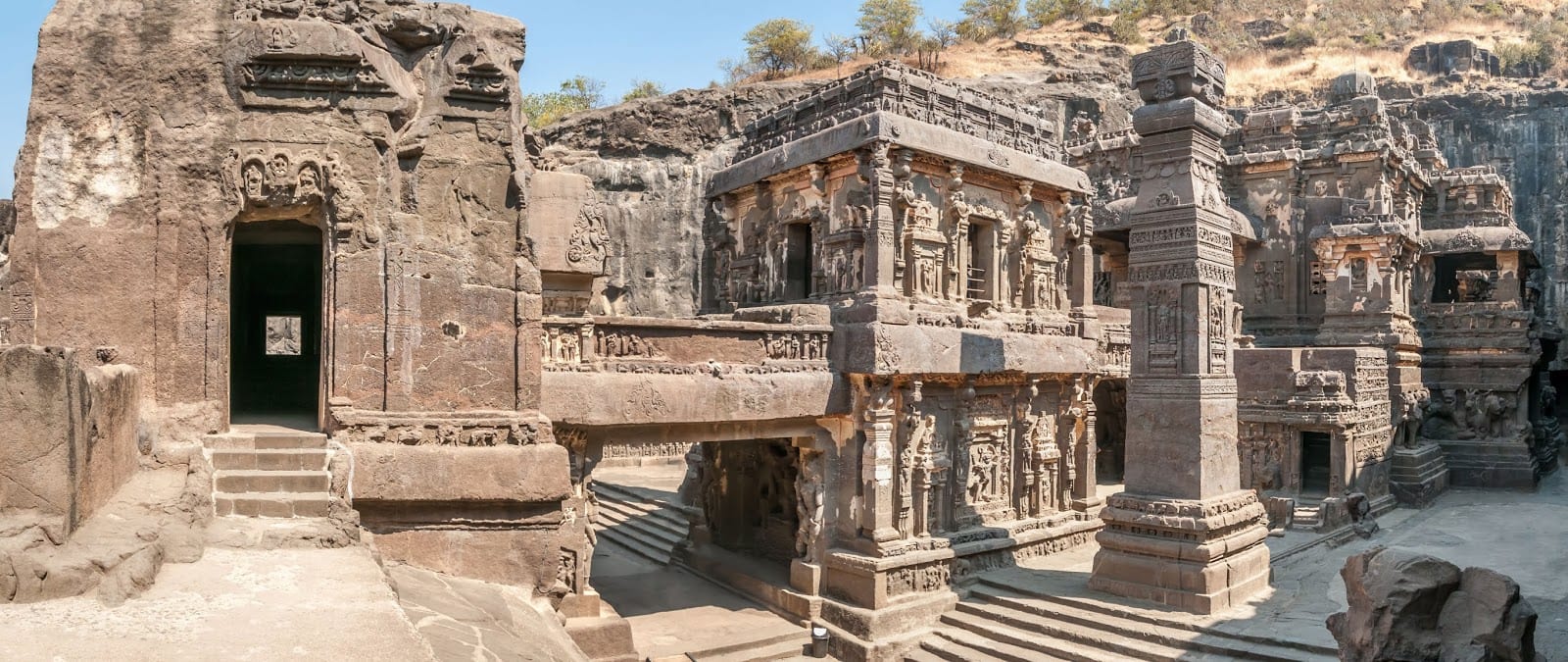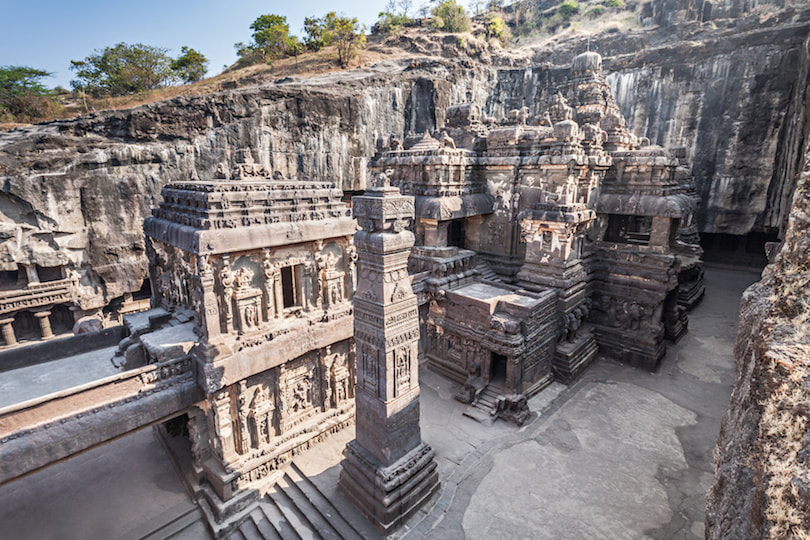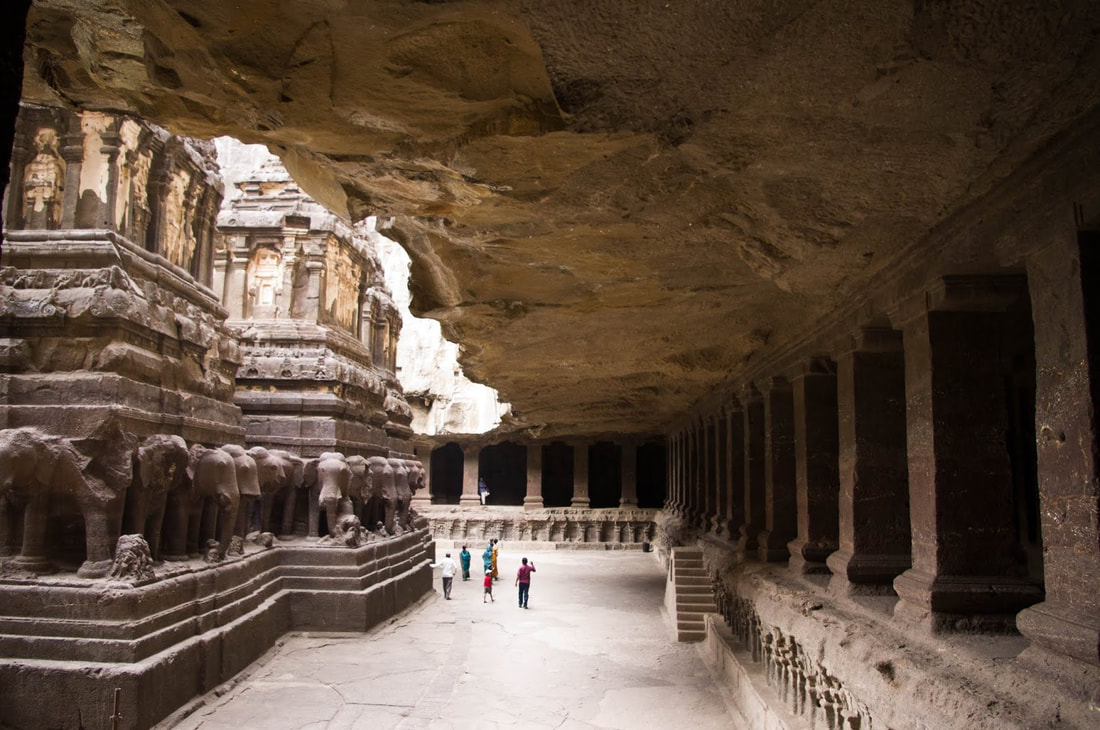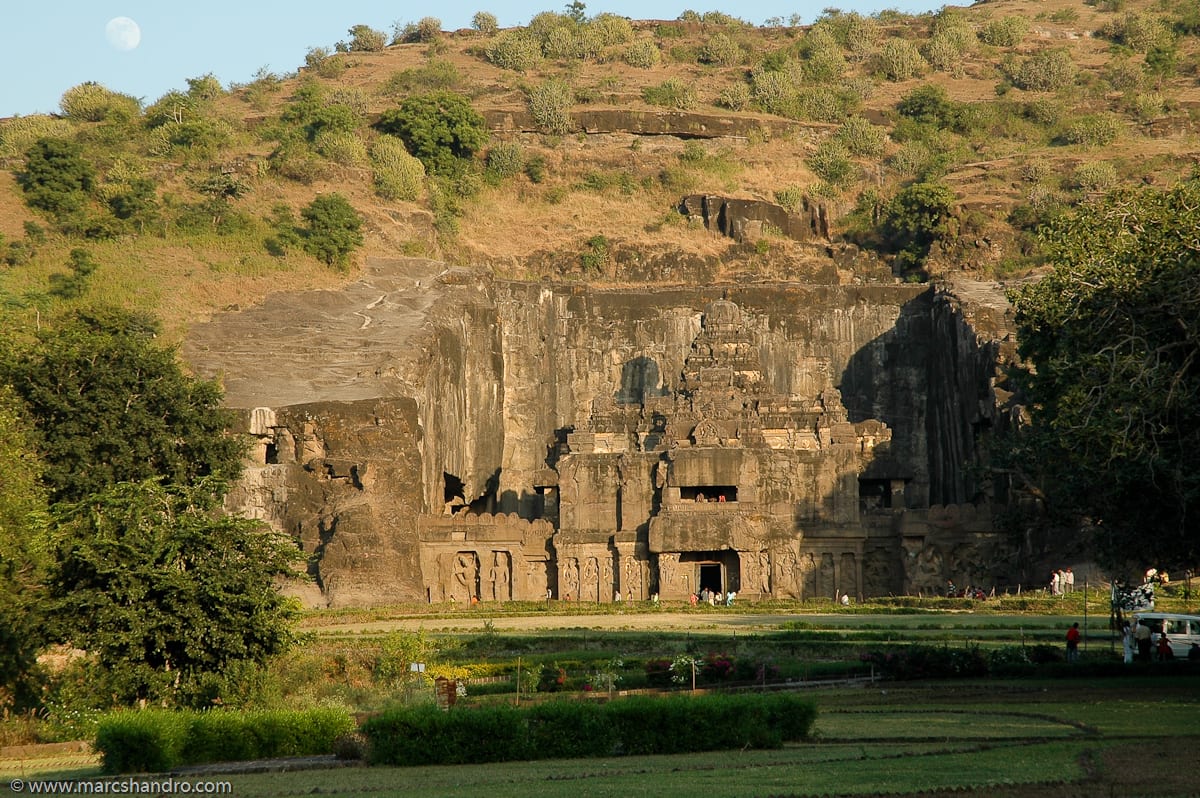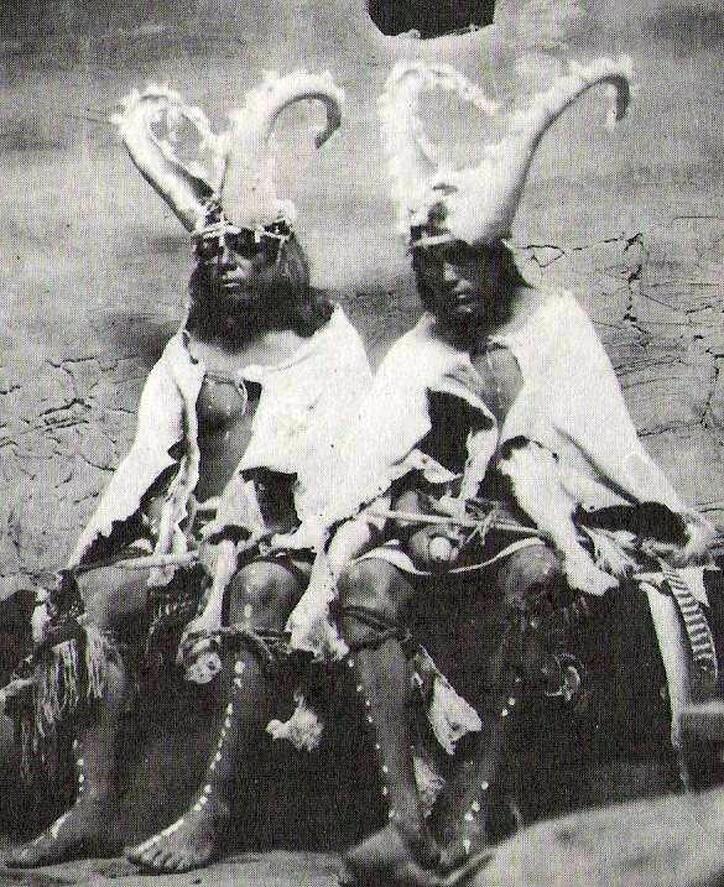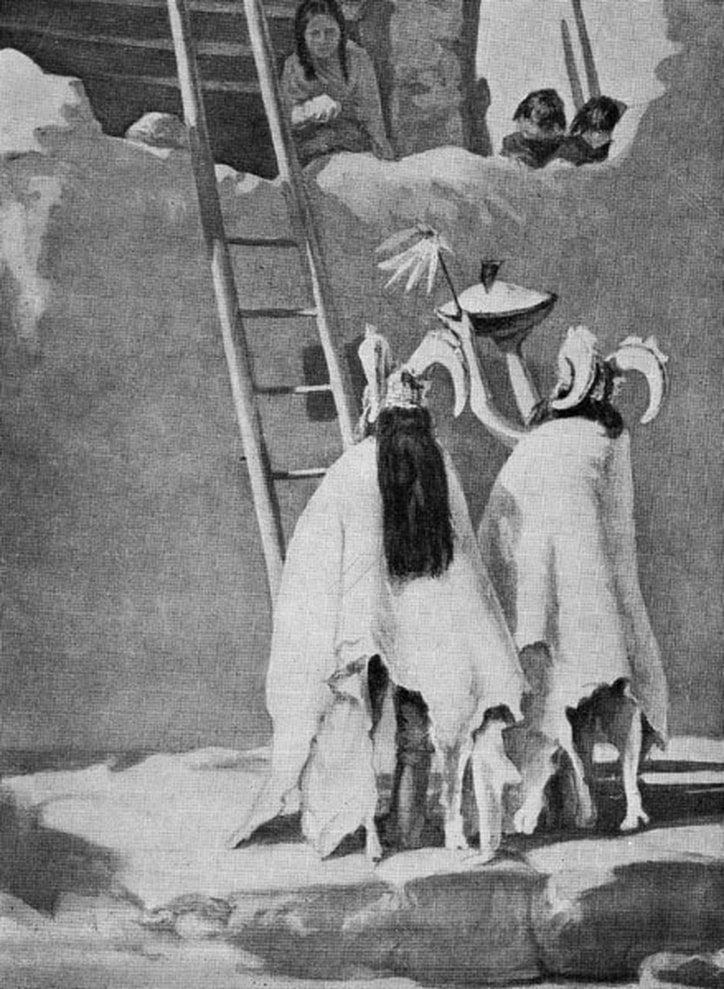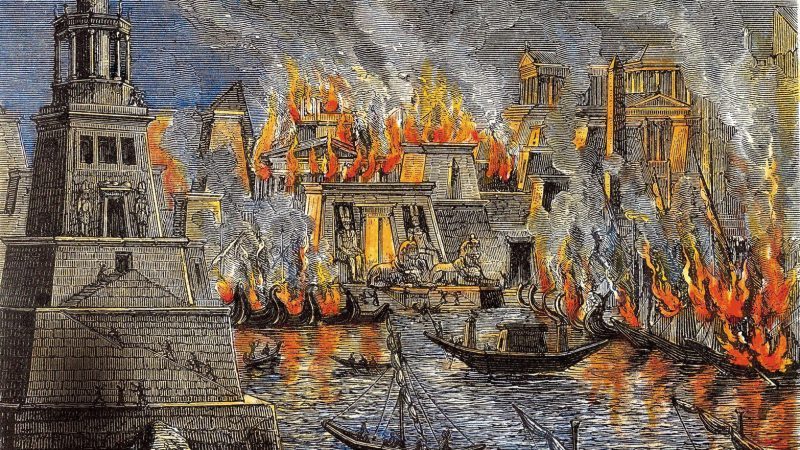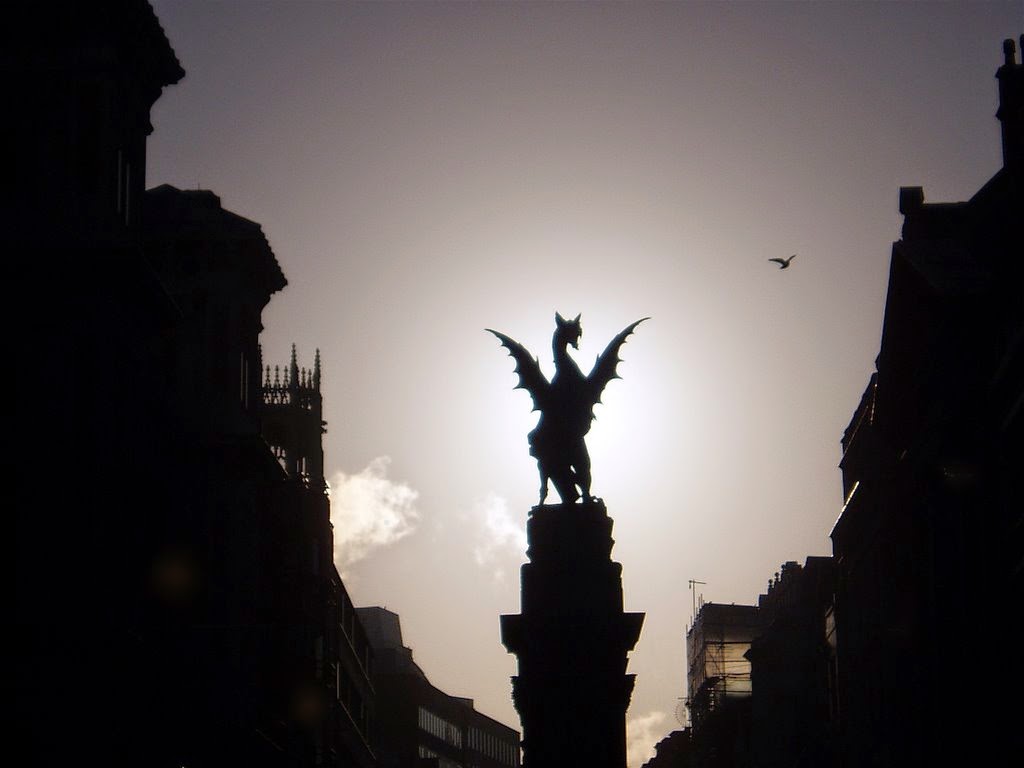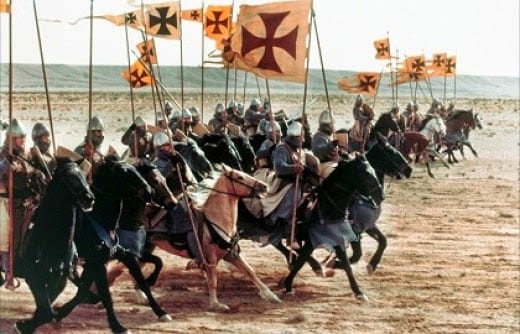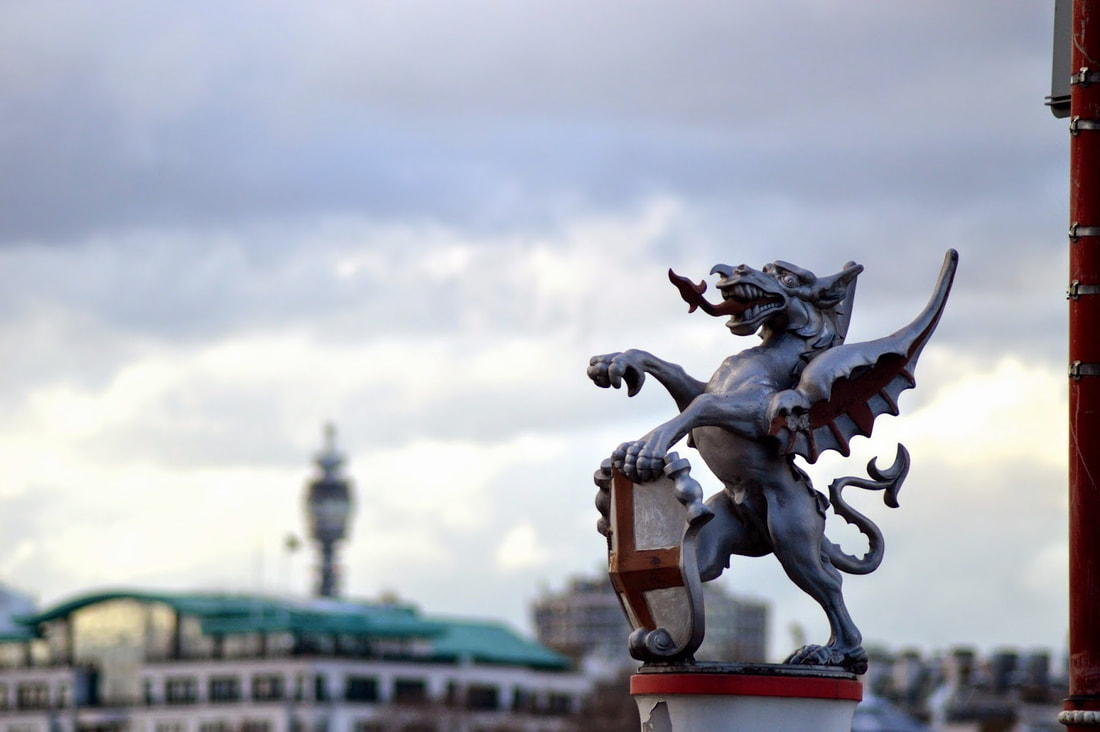|
Coca and tobacco found in ancient Egyptian mummies: Is this the ultimate evidence of transoceanic voyages 5,000 years ago? What if the ancient Egyptian civilization was much more advanced than we’ve ever imagined? After all, they are the rightful owners of some of the most impressive ancient structures on the surface of the planet. Is it hard to believe they could have constructed powerful vessels that would have allowed them to travel to other continents? According to DNA analysis performed on ancient Egyptian mummies, this may not be just ‘another crazy conspiracy.’ Dr. Svetla Balabanova was left in total disbelief when she saw the results of her own analyzes. The prestigious German medical examiner had been commissioned to analyze several mummies looking for traces of drug use in the rulers of ancient Egypt. What she found was considered to be a history changer. After analyzing several ancient Egyptian mummies, the researchers discovered the presence of high levels of cocaine, nicotine, and tetrahydrocannabinol in bodies that were preserved for thousands of years. With scientific rigor, Dr. Balabanova repeated the tests several times and sent samples to other laboratories for independent testing. All successive analyzes confirmed the initial results. Ancient Egyptian mummies had high levels of cocaine, nicotine, and tetrahydrocannabinol. But where did the ancient Egyptians obtain the products from? Despite finding evidence, the scientific community remained skeptical, accusing the researchers who had made the discovery of incompetence. They began by stating that the mummies were false until they were proven to be authentic. Then they went on to argue that they were contaminated until it was shown that it is impossible to contaminate the inner stem of a hair. They then claimed that the experiments were not reproducible until an independent group of experts found traces of cocaine and nicotine in other Egyptian mummies in a British museum. Finally, they ended up defending the indefensible: that tobacco and coca did not come from South America but rather were very rare varieties of African origin. But no evidence of coca or tobacco cultivation was ever found in Africa, Europe or Asia before the time of Christopher Columbus. What the mummies tell us is an intolerable story for history as we have learned in school. Coca and tobacco are undoubtedly originating in South America. Or could this be evidence enough that a highly advanced civilization existed on Earth thousands of years ago? A civilization that had knowledge and technologies that neither the Egyptians nor the Greeks nor the Romans had at that time? Whatever it may have been, many authors agree that this is irrefutable proof that the ancient Egyptians had contact with products that originated halfway around the globe; on the American Continent.
2 Comments
The sinister dates back to the beginning of the Catholic Church, and it looks as if the catholic faith was heavily inspired by the church in the early days. Their has been numerous reports that the cult was working since the 1st century BC within Rome. The priests would recognize themselves as “pontiffs,”.’ And they referred to their temples as the ‘Vatican temple.’ Ancient Romans had banned the cult from the city many times until the fall of the Roman Empire. The cult managed to make a comeback in returning to the city. It has been said that they took the community role of being leaders right after the Romulus Augustulu’s reign, and worship of demons as late as the year 1057. The Vatican cult’s position in the Catholic Church helped to pave way to some dark chapters in the history of the Catholic faith. In 1483, cultist, Tomás de Torquemada was named Inquisitor General of Valencia, Aragón, and Catalonia. He was given he most sacred and highest position in the cult. The knights or SS of the Sedes Sacororum and proceeded to start a horrifying campaign against those innocently charged with witchcraft and heresy. At this point, the dark practices of the group were accepted as a form of greater good by the whole Catholic Church. There were times where the hours committed by the cult, like human sacrifice, had been leaked to the public and the Vatican wasn’t embarrassed with the Pope, and even considered forgiveness of their mortal sins so they could retain their key to heaven, even with their cruel track record. It has been rumored that the cult expanded into departments in government. When Heinrich Himmler was handed a position in the Third reich, he spared no time to build a Nazi branch of the Knights of the Sedes Sacrorum, he infamous SS. This brutal organization went on to kill innocent people throughout much of Europe. When WWII ended, the German chapter of the organization was shut down, however it is noted that the cult is still working today. The US secret service has been alleged to have invested fully into the cult’s goals since President William McKinley in 1901. In Dr Michael Salla’s latest book “Antarctica’s Hidden History” we learn about the Thule Society, the German Secret Space Programme, the Reptilians, the Nordics and so much more. A brief summary of his book is below. German Secret Space Programmes Before World War 2, Adolf Hitler was supported by the German Workers Party (who later became the NAZI party). The German Workers Party was soon to be supported by the Thule Society, once they realised what an asset Adolf Hitler was. The Thule Society believed in a mysterious force called Vril, a force that could be harnessed by individuals; their aim was to gain power using this force. With the help of a psychic called Maria Orsic who telepathically communicated with Inner Earth humans they obtained information and plans to build flying saucers. The Thule society started to produce flying saucers. During the 2nd world war when the Germans realised that they were losing, the Thule Society transferred all their manpower, knowledge and technology to the Antarctic. The Thule society split into two separate groups. The Thule Society was working with reptilians from Earth and Maria Orsic was working with Nordics from inner earth. Antarctica is about the same size as the USA and Mexico combined. It has 3 large mountain ranges and approximately 138 volcanoes. So there was plenty of room for both groups to expand. The Thule society group wanted power and when they moved to the Antarctic they took many slaves along with them. Both groups carried on with their work in Antarctica, one with the help of the reptilians and the other with the help of the Nordics. USA Intervenes The USA was aware of the Germans in Antarctica and tried to come to an agreement with them. In 1946 Rear Admiral Richard Byrd went down to the Antarctic to destroy the German bases. This was called Operation High Jump, 4,700 Military, 6 Helicopters, 6 Martin PBM flying Boats, 2 Seaplanes, 15 other Aircraft, 13 Navy Supply Ships and 1 Aircraft Carrier accompanied Rear Admiral Byrd. Operation High Jump’s cover story was said to be one of scientific research in the area. Really it was a Military Force against a secret enemy. The mission was supposed to last 6 months, it only lasted 8 weeks. The German Secret Space Programmes technology was far too advanced for Admiral Byrd and his military to overcome. He was defeated. Many of the UFO’s originally seen flying around at this time were the German Secret Space Programme UFO’s In 1952 UFO’s appeared over the White House. At the time they were thought to be Aliens from another planet but really it was the Germans showing off their hardware. In February 1954 Eisenhower had a secret meeting at Edwards Base with Maria Orsic and the human looking Nordics; they attempted to dissuade Eisenhower to continue with nuclear weapons and warned about the Germans who worked with the Reptilians. Maria Orsic’s group wanted peace and the new technology to benefit all of mankind. Ultimately Maria wanted humanity to be part of the galactic community. Eisenhower rejected their offer. In February 1955 Eisenhower had another secret meeting this time with the German and Reptilian group at Holloman Air Force Base. It is believed that an agreement was reached with this group. Corey Goode has said that after the treaty was signed a US Secret Space Programme began. The US SSP and the German Secret Space Programme tried to infiltrate each other’s groups. The German SSP eventually won. They soon took over US financial systems, the military industrial complex and the US government. It was agreed that worldwide corporations would produce equipment for the German Secret Space Programme. This was possible because many US and German industrialists belonged to a secret group who had no national affiliations. This group is known today as the elite, the cabal or the illuminati. German Secret Space Programme Expansion There are now many cities under the ice of Antarctica in huge caverns. The German Secret Space Programme has expanded beyond comprehension. Many countries around the world have now worked with the German SSP in Antarctica along with the US and the European nations. Many more large corporations from around the world have also collaborated with the Antarctic Germans. Eventually the German SSP built bases on the Moon and Mars and they still used human slaves to do their work for them. William Tompkins says the slave trade is big business and it is still happening today. The German SSP became known as The Dark Fleet and the USA Navy SSP became known as Solar Warden. Corey Goode says the human slave trade is now run by the Interplanetary Corporate Conglomerate which was started by the elites who secretly control the earth’s governments. The elites believed many humans were being abducted anyway so they decided to make a profit from this activity. They now sell humans to extra-terrestrials as slaves. Antarctica Now The Dark Fleet is still operational in the Antarctic and they were the first to become aware of its hidden secrets. In recent years the volcanoes have caused the ice to melt revealing alien spaceships and many artefacts. Inside these alien space ships they have found the bodies of pre-Adamites in stasis chambers. Pre-Adamites have elongated skulls and strange shaped bodies due to the different gravitational pull on their home planet as opposed to the earths. They are said to have arrived on earth 55,000 years ago. It is said they arrived from a planet in our solar system, generally assumed to be Mars. It is this group that is believed to have created human alien hybrids by interbreeding with the humans at that time. They took over the world with their advanced technology. The illuminati, elite, cabal or powers that shouldn’t be claim to be descended from the pre Adamites and that is why they feel they should rule over the world and we should all be their slaves. It is not sure how the pre Adamites came to be frozen in the Antarctic, one theory is that the Antarctic was once in a different position and the poles shifted suddenly causing the area to freeze instantly. Some of the space ships have crash landed in the area causing another puzzle. Corey Goode has visited Antarctica and seen the large caverns and huge cities. He has seen the artefacts and the huge space ships. This information as usual is being kept secret from the general public by the governments of the world. There is obviously far more going on around us on this earth than we could ever have realised. More and more information leaks out every day. Emery Smith has stated that the earth will reveal the answers to us all eventually and in the case of Antarctica once the ice melts, he will certainly be right. Let’s hope we don’t have to wait that long! High up the Bolivian altiplano,’ south of Lake Titicaca and the ancient complex of Tiahuanaco, we find the ancient ruins of Puma Punku. Believed to have been erected by the ancient Tiwanaku culture in the bronze age, between 1,000 and 2,000 years ago, the ancient site is home to some of the most fascinating ancient stone structures on the surface of the planet. Shrouded in mystery, the archaeological site of Puma Punku is one of the biggest headaches for mainstream archaeologists who are unable to explain how ancient cultures cut and shaped granite stone to an incredible precision, transported blocks of stones that weigh more than 50 tons, and placed them in position like a puzzle, so that not a single sheet of paper can fit between them. But if that wasn’t enough of a mystery, there’s that LITTLE magnetic anomaly present at Puma Punku. The stones at Puma Punku were believed to have been quarried by the Tiwanaku culture at Cerro Khapia, located some 70 kilometers away. The question that arises here is… how on Earth did the ancients transport these massive blocks of stone, tens of tons in weight across 70 kilometers from their quarry to Puma Punku? The Magnetic Anomaly This mysterious feature which makes Puma Punku even stranger was spotted by researcher and author Brien Foerster. In a video uploaded onto his YouTube account, Brien Foerster takes us on a trip to the Bolivian Altiplano where he tours through Puma Punku and shows us how certain rocks at the site – Puma Punku’s Grey Stones – display magnetic anomalies. These curious features have been completely ignored and left unattended by scholars who have studied Puma Punku in the past. Here is another video where we can see the curious magnetic anomaly present on the grey stones of Puma Punku. And another video by Brien Foerster: Still think Puma Punku is just another ordinary ancient site? Think again There’s a temple in India that’ll give you goosebumps. Not because it’s haunted or scary, but because its design and construction are beyond anything we thought humans were capable of. The Temple itself was carved into the mountain, 164 feet deep, 109 feet wide, and 98 feet high. This means that the Kailasa Temple is one of the biggest monolithic structures on the planet, carved out of a single rock. This magnificent temple, located in Ellora, Maharashtra, India, the temple itself is known as The Kailasa Temple. Some refer to it as the Kailasanatha temple. The temple is dedicated to Hindu worship and was commissioned by King Krishna I of the Rashtrakuta dynasty in ancient India. Rightfully, the Kailasa Temple is considered one of the most remarkable cave temples ever built in India because of its size, architecture and sculptural treatment. The Kailasanatha temple is part of 32 cave temples and monasteries which are collectively referred to as the Ellora Caves. The Kailasa Temple occupies cave 16. Their construction is generally acknowledged as having started during the eighth century. And while many scholars are convinced that the construction is attributed to the Rashtrakuta king Krishna I, based on the multiple distinct architectural and sculptural layouts, combined with its massive size, and peculiar design, some scholars argue that its construction spanned the reigns of multiple kings. Vertical Excavation — Carving a Mountain The temple looks totally bada**. In fact, this is one of my favorite temples in India. It looks impressive, it looks different, and it looks majestic. The most notable feature of the Kailasa Temple is ‘Vertical Excavation.’ When the temple was built, its carvers started at the top of the mountain and excavated downward. As explained by Rajan, K.V. Soundara, in the book Rock–cut Temple Styles, traditional methods were precisely followed by the master architect of the project, and could not have been achieved if its builders excavated the temple out of the front. This fact makes the Kailasa unique and different from other temples. An ancient legend speaks of the construction of the Kailasa Temple. According to Katha-Kalpataru by Krishna Yajnavalki (c. 1470-1535 CE), the local king had suffered from a terrible disease. His wife, the queen, decides to pray to the God Shiva, to cure her husband. The queen promised to build a temple if her wish was granted and promised to observe a fast until she could see the shikhara (top) of this temple. Eventually, the king was cured, and the queen requested for the temple to be built immediately. However, each and every architect who was introduced to the project explained that it would take months to build a temple complete with a shikhara (top). Then, one architect called Kokasa explained to the King and Queen that they would see the shikhara of a temple within a week’s time. Eventually, Kokasa started but using a different technique. Instead of carving from the side, he went for the top, and excavated the mountaintop vertically, from the top. Eventually, within a week, he finished the shikhara allowing the queen to conclude her fast. One of the most notorious elements of the Kailsaaa temple depicts Ravana shaking the Kailasa mountain. The sculpture is recognized as one of the finest pieces of Hindu art, and it is possible that the temple came to be known as Kailasa after it. Some authors argue that the temple was completed in eighteen years’ time. More than 400,000 tons of rock were removed from the mountain. It is estimated that around 60 tons of rock were removed each day during the temple’s initial construction phase. It is believed that the builders worked for more than twelve hours a day, hauling around 5 tons of rock (average) out from the mountain each hour. And while we do know how the temple was planned and most likely how it was completed, we still don’t exactly know how the designers, architects, and builders managed to achieve all of this with relatively limited technology available to them at that time. New video taken from USS Omaha shows spherical UFO splash into ocean off San Diego: Ex-fighter pilot says airmen saw unknown aircraft off Virginia coast EVERY DAY for years calling them a 'worrying security threat' ahead of Pentagon report. The more you look at ancient texts and stories from around the world, you can’t help but see surprising patterns. Some are so glaring that it takes real effort to ignore them, but that’s what many people do. One example is from the Hopi Native America tribe and their beliefs in “Ant People.” The Hopi of the American Southwest are sometimes referred to as “the oldest of people” by other Native American tribes. Once you learn about the Ant People, you can’t help but compare them to the ancient Sumerian texts of the Anunnaki. Why? Let’s take a simplified look, respecting the truth that only members of the Hope tribe could fully explain. In ancient cultures, there is a common thread of worshiping extraterrestrial beings from the stars who will one day return. Animals symbolic of these beliefs appear frequently in ancient art. The Hopi have a reverence for ants, similar to the way the Egyptians and Sumerians and other cultures had a special reverence for cows. The cows may have represented our Milky Way galaxy, and in the case of the ants, they described beings from the stars known as the Ant People. The Hopi words for the Ant People or Ant Friends (Anu Sinom) create a direct link to the stories of the Anunnaki. It could be coincidental, but it is quite striking. The Babylonian sky god was named Anu, which is the Hopi word for ant. The word, Naki translates to “friends.” Thus, Anu-Naki translates to “ant friends” in Hopi. In both languages, they are describing extraterrestrial beings, but the Hopi say these Ant People came from under the ground. Another strikingly similar word is the Hopi word sohu, meaning “star,” and the Egyptian word sahu means “stars of Orion.” This constellation is seen repeatedly across the globe. Ancient Astronaut theorists observe Orion and other systems such as the Pleiades appearing over and over in the layout of the pyramids and ancient structures. Another coincidence? In the Hopi legend, these Ant People were their saviors, taking them underground and teaching them how to survive two extreme cataclysms. Once again, we see stories of a great flood like that described in Sumerian texts and the Bible. Surviving underground with the Ant People, the Hopi ancestors learned how to grow food with little water and build dwellings in the rocks. They learned about the stars and mathematics and would put those skills to use when they founded a new civilization. When it was safe to return to the surface, the Ant People instructed the building of incredibly complex habitations such as what is seen today at Chaco Canyon. From above, they might appear like a giant ant mound. The structures included Kivas, a Hopi word for round semi-subterranean ceremonial rooms that were entered by ladders from above. According to the National Park Service: “During ceremonies today, the ritual emergence of participants from the kiva into the plaza above represents the original emergence by Puebloan groups from the underworld into the current world.” Petroglyphs depicting the Ant People appear still appear today, and the Hopi continue to tell the story in dances and rituals. Below are some intriguing images of Hopi ceremonies taking place inside the kivas. Ancient Origins on the legend: “One of the most intriguing Hopi legends involves the Ant People, who were crucial to the survival of the Hopi — not just once but twice. The so-called “First World” (or world-age) was apparently destroyed by fire — possibly some sort of volcanism, asteroid strike, or coronal mass ejection from the sun. The Second World was destroyed by ice — Ice Age glaciers or a pole shift. “During these two global cataclysms, the virtuous members of the Hopi tribe were guided by an odd-shaped cloud during the day and a moving star at night that led them to the sky god named Sotuknang, who finally took them to the Ant People — in Hopi, Anu Sinom. The Ant People then escorted the Hopi into subterranean caves where they found refuge and sustenance.” Stories that giants and other strange beings have lived deep inside the Earth are seen around the globe. In the Hopi legend, these beings were benevolent and helped the tribe even to their own detriment. “In this legend, the Ant People are portrayed as generous and industrious, giving the Hopi food when supplies ran short and teaching them the merits of food storage. In fact, another legend says that the reason why the ants have such thin waists today is because they once deprived themselves of provisions in order to feed the Hopi.” The thin waisted ants with their elongated heads and antennae resemble some of the ancient petroglyphs. Across the globe, an African species of Ant called the Pharaoh Ant remind some of a tiny version of Pharoah Akhenaten, famous for his strange alien appearance. The History Channel’s Ancient Aliens series covers this subject in Series 4, episode 9 (See a clip below). In addition to depictions of the Ant People are wall paintings that show an unmistakable similarity to cuneiform symbols from ancient Sumeria. These symbols are associated with the “WingMakers,” according to the show. Just as in ancient Egypt, there were matriarchal dynasties, DNA findings from Chaco Canyon show a possible maternal dynasty that ruled for hundreds of years between A.D. 800 and 1250. Scientific American published a story on this in 2017 after researchers examined the remains of 14 people found a burial crypt that ended up at the American Museum of Natural History in New York. The Chaco Canyon settlement had thousands of Anasazi inhabitants, who believed in protecting Mother Earth. However, the ancient Puebloans mysteriously disappeared, along with any signs of the Ant People. Today researchers believe that climate change drove them away as the growing population couldn’t sustain itself. The Anasazi integrated with tribes like the Hopi, Zuni, and Rio Grande Pueblo. As the modern world faces extreme challenges from climate change today, the teachings of these tribes are more important than ever. Can we learn to respect the natural world and live in harmony with Mother Earth? Or are we headed for inevitable disasters, like those described in the Hopi legends? Ancient Astronaut theorists often speculate if extraterrestrial beings could play a part in helping humans overcome impending future disasters. In the case of the Hopi legends, it appears they did just that. Could the Ant People return from deep in the Earth or from their home in the stars in our time of need? For another Hopi origin story watch this beautiful video from PBS: When Alexander the Great set about conquering the known world, he created cities in the wake of his conquests. The most well known of these is Alexandria, although he did find something around 17 different cities bearing the name. There’s one specific Alexandria that’s stood out among its peers, located in Egypt. This Alexandria was host to the Library of Alexandria, a veritable encyclopedia of the entirety of the world’s knowledge at that time. And then it was burnt. While the Library of Alexandria survived several destructive forces throughout its existence, the most destructive was due to Julius Caesar. As an accidental casualty of war, the Library suffered extensive damage during the Ptolemaic siege in 48 BCE. The library continued to operate afterward, and while the extent to which it was destroyed is uncertain, there were undoubtedly countless irreplaceable texts lost. The nature of the Library of Alexandria was meant to compile all of the world’s knowledge. With every new ship that came into port, their books onboard were confiscated, copied, and then the copies returned to their original owners. Doing so created the world’s greatest resource of knowledge and learning. This May Have Included Knowledge About Aliens We have been establishing historical documentation for years. Flying saucers in the sky, blinking lights, and other strange phenomena have been well documented for centuries. If we’ve been experiencing inexplicable phenomena in our modern day and age, then there’s a chance that the Library of Alexandria contained the truth about aliens. This truth, of course, can come in a variety of forms. There’s the long-standing belief that the Ancient Egyptians received otherworldly guidance when establishing their civilization. While we have no concrete surviving evidence of that, the Library of Alexandria may have housed that knowledge. There’s more than a direct intervention that could theoretically inform us about the existence of aliens. Eyewitness accounts, records, encounters, all of which could have been stored in the library for future generations to learn from. However, the possibility of this knowledge now surviving is unlikely, due to the library’s burning. There Are Accounts Still LivingAlexandria, while holding the greatest store of the world’s knowledge, did not hold all its copies. There were too many civilizations at the time to fail to store our history. Whether or not Alexandria lost a significant portion of what we could perceive as a historical record of alien contact, we still have other sources to pull from. 1. Plutarch Plutarch was a Greek historian and biographer who lived between 46 and 120 AD. He later became a Roman citizen, adopting the name Lucius Metrius Plutarchus. While his duties in his life varied, his most notable works involved the detailing of various Roman Emperors. These Roman figures lived long before his time, but his works are regarded by historians as reliable historical sources. Most of Plutarch’s works have been lost to time. Those that have survived to this day are in the majority only fragments of his work, and only a few are complete. However, there’s important information to be derived from the work that we do still have from him. One of the biographies Plutarch worked on was centered around a man named Lucullus. He was a politician who served both in the government and in the military. What’s important here is not the man himself, but rather an event that occurred that Plutarch recorded in the biography. The story goes that Lucullus was leading an army against Mithridates, the king of Pontus. This had been a long ongoing conflict between the Romans and Mithridates, with Lucullus facing him in the Third Mithridatic War. The event in question took place before a battle with Mithridates, before the conflict began. The account of the extraterrestrial strikes many similar beat to modern recounts. As Lucullus marched to battle, the sky evidently opened up to welcome the coming object. It was described as “[appearing] a rapidly descending object resembling a flame, which appeared like a vase in shape and like a glowing annealed metal in colour.” This description is taken directly from Plutarch’s biography of Lucullus. It needs to be noted that Plutarch lived long after any of these Romans lived. However, he also lived long after the initial burning of the Library of Alexandria. Plutarch was renowned for his research, including quotations and sources in each of the Lives he wrote. Essentially, since he learned of this alien event that Lucullus experienced, it’s probable that other documentation of similar events lived as well. 2. Alexander The Great There’s no better source than the man who founded Alexandria himself. Alexander the Great is regarded as one of humanity’s greatest military leaders. According to historical records, Alexander was recorded to have experienced similar phenomena that could easily be described as extraterrestrial. The modern take on the tale has been established by Frank Edwards, written in 1959. According to the story, while Alexander the Great was leading a siege on Tyre, he received assistance by “great silver shields” in the sky. The extent of the UFO’s description ends there, beyond there being three of them flying in a triangle formation. The UFO’s then, allegedly, fired a beam into Tyre’s walls, destroying them and allowing Alexander’s army entrance into the city. These shields have reappeared in other campaigns that Alexander lead as well. While in combat against the Indian army, these same shields were reported to have appeared above the river they were fighting over. Their swooping down startled the steeds of both armies, and after Alexander the Great won the battle he decided against pressing on into Indian territory. However, there are issues to be taken into account with this account of an extraterrestrial presence. While the myth of aliens assisting Alexander in his conquest has gained popularity, the extent of its validity goes no further than Edwards. He did not cite any sources when writing about the experience, and the histories chronicling Alexander’s exploits have been lost. While there’s a chance that there are histories detailing alien presences in Alexander the Great’s campaigns, as of now there are no reputable sources to reliably agree on these events occurring. If Frank Edwards secretly had documents detailing these stories, they were never released. Whether or not the truth behind aliens aiding Alexander the Great would likely have been found in the Library of Alexandria. 3. Titus Livius Patavinus Titus Livius Patavinus, colloquially known as Livy, is another well known Roman historian. While he also lived post-Alexandria burning, any Roman documents are regarded as historically significant due to their extensive practices for reliable documentation. Livy himself is well-regarded, earning him more than a grain of salt when it comes to his historical recounting. Livy’s books of History, of which he wrote many, accounted for much of the established Roman history recorded. However, the passage we’re interested in regards an account of “phantom ships” in the sky. While the record itself appears to be vague, the meteorological event itself is significant. Could this have been an accounting of visiting extraterrestrials? There’s no certainty, and experts in UFO research contemplate that this experience was more figurative than literal. However, the description itself seems oddly geared toward a specific physical description, not unlike what we’ve heard in our modern day. It’s even within the realms of similarity with Plutarch’s own description. Regardless, the excerpt describes an event taking place in 218 B.C., well within the time frame of Alexandria’s existence. Surviving accounts, kept by successors to historical knowledge, maintain unexplained phenomena linked to what may be extraterrestrial intervention prior to Alexandria’s burning. There’s no telling what other bodies of work written with the same intent may have been lost in the fire. The red-haired, fair-skinned colossus had six fingers and six toes on each hand and foot, according to the soldier. Following the submission of their after-action report, the soldier recalls being told by their superiors to rewrite it in a specific way, most likely removing any mention of a giant being. American by birth, I have lived in London for fifteen years and consider it my home. During that time I have explored many of the city’s esoteric sites and have concluded that this remarkable metropolis is only just beginning to reveal its true occult significance. London has been inhabited for thousands of years and the diversity of its settlements has resulted in a rich, if not peculiar, collection of occult traditions. The earliest humans hunted here over four hundred thousand years ago. While a rich abundance of wildlife and a strategic riverside base would have attracted many different colonies of people, one wonders how the ancients truly saw their landscape, and how many were drawn here due to the distinctive snake-like curvature of the River Thames. The serpent is one of the oldest occult symbols, representing many esoteric concepts, including duality, good and evil, and harmony with the earth. Thanks to the wonders of technology, an image of the serpent in the form of the winding Thames has been broadcast daily to millions of viewers across the globe for nearly three decades, courtesy of the television programme Eastenders, whose opening credits feature the unique landscape from the air. Like other ancient settlements in Europe, London was inhabited by megalithic societies who constructed stone circles and burial mounds. The Iron Age introduced more sophisticated settlements and hill forts which, sadly, can only really be appreciated today by aerial photography. These include settlements at Wimbledon Common, Heathrow and the present-day Houses of Parliament, to name a few. Urbanisation has all but erased the megalithic footprint of London, but some remnants, such as Primrose Hill, with its curious burial mound and breathtaking views of London, remain. In fact, Primrose Hill would become a haunt of occultists William Blake and Dion Fortune, amongst others, and plans, albeit later aborted, would be made to construct a colossal pyramid burial complex on top of the hill, complete with over five million honeycomb-shaped tombs. There is considerable evidence for occult practices having occurred in London in ancient times: beeswax effigies, thought to be five thousand years old, have been found in the Thames, representing man’s attempt at harnessing occult powers via shamanism and many stylised Bronze Age swords have also been discovered in the Thames, suggestive of votive offerings to Celtic deities. Similarly, albeit over a thousand years later, a golden-horned, apparently ceremonial Viking helmet was discovered in the Thames, near Waterloo. The amazing artefact is unique in Europe and appears to reinforce the occult tradition of London’s ancestors and their reverence for the serpentine river. The Trojan leader Brutus established a city here in 1100 BCE and named it Troia Nova, or Trinovantum. Later, the 1st-century BCE King Lud renamed it Caer Lud, which evolved into Caerlundein, Londinium and finally London. It is said that giants lived in London in Brutus’s day and that he captured two, Gog and Magog, and employed them as porters at the gate of his palace. Brutus is also associated with another legend, the London Stone, a curious rock of which little is known for certain. Some say it came from Troy, others believe it was a druid stone or even the stone from which Arthur extracted Excalibur. A medieval proverb states, “So long as the stone of Brutus is safe, so long shall London flourish.” William Shakespeare wrote about the stone and, intriguingly, many believe that his plays were actually written by Francis Bacon or Christopher Marlowe, both of whom were esoterically connected. Another London occultist, William Blake, wrote of the London Stone in his poem, Jerusalem (1820): “At length he sat on London Stone and heard Jerusalem’s voice.” Clearly, the relic once cast a magical spell on the city. Sadly, it is now embedded in an abandoned building across from Cannon Street Tube Station, its former glory but a distant memory. Hail the Romans: As Above So Below The arrival of the Romans marked a significant milestone in the evolution of London’s occult tradition and in 54 BCE Julius Caesar and his men crossed the Thames in West London, signalling the new era. The Romans were especially threatened by the Druids, who, according to Caesar, were involved in divine worship and human sacrifice, including the burning of prisoners, or even innocents, in ‘wicker men’. Sure enough, London’s native tribes appear to have paid homage to their gods for protection from the Romans, as indicated by a decorative bronze shield with inlaid coloured glass found in the Thames near Battersea that dates to this time. The original inhabitants of London were incredibly resilient and fought bravely to maintain their cultural identity. One hundred years later Queen Boudica sacked the city and soundly, if not brutally, defeated the Romans in retaliation for the rape of her daughters and the killing of the Druids; but the Romans would soon avenge this attack and all but extinguish the Druids and their largely oral occult traditions. The Roman invasion changed the landscape, language, culture and thought process of native Britons forever. There are many museum exhibits in London that document these changes via artefacts and re-creations. From an occult perspective there was a less tangible, but no less fundamental, change in consciousness starting to take place: the introduction of Mithraism, and the theology of ‘as above, so below’. Not much is known of this ancient mystery school, other than it involved Mithras, the Roman God of Light, but we do know that it also involved the ritualistic slaughter of bulls and included a seven-grade system of initiation. Like the Masonic rituals that would be conducted some fifteen hundred years later in London’s Grand Lodge, Mithraism included ritual meals and a secret handshake. The Romans conducted their rituals in underground temples called mithraea, and several of these evocative temples have been discovered in London, including one remarkable 60-feet long, 26-feet wide temple beneath the now underground River Wallbrook. The origins of Mithraism are uncertain, although it is known to have been popular amongst Roman soldiers, most likely because it provided a comforting framework for the afterlife, and understandably so. In their profession a premature death was almost inevitable. The cult is thought to be Roman or Persian in origin and the name ‘mi-it-ra’ has been found inscribed in a 1400 BCE peace treaty between the Hittites and the kingdom of Mitanni in Northern Syria. This is interesting, for both regions have a rich tradition of bull veneration and each was contemporary with Dynastic Egypt, where I believe the tradition of Mithraism originated. In Egypt, the slaughter of Apis (‘bee’ in Latin) bulls resulted in 1,000 souls, represented as bees, being born out of the body of the dead bull. The occult tradition of bull slaughter, which is referenced in the Mesopotamian Epic of Gilgamesh and the Egyptian Opening of the Mouth ceremony, commemorates what the ancients observed in the constellation of Taurus: a hunter killing a bull with distinctive marks (3 stars) on its forehead, just as the Apis bull has distinctive marks on its forehead. I believe London’s adoption of the occult tradition of ‘as above so below’ can also be found in the legend of King Arthur, whom every Celtic nation claims as their own, most notably England. In a recent documentary on King Arthur that I presented for the National Geographic Channel, I expressed my belief, much to the producer’s chagrin, that the ambiguity around Arthur’s origins is due to the fact that he never existed. Rather, he was an archetypical hero, who lived in the constellation of Ursa Major, known as the ‘Great Bear’, meaning Arthur. Man would have observed the Big Dipper, which resembles a platter (the object that was considered to be the Grail in the first complete account) rotating around the Pole Star, promising to return, like Arthur. The night sky also includes an outline of a man with a wounded thigh, which sounds very much like the Fisher King. And, of course, Arthur fought twelve battles and there were twelve knights of the ‘round’ table; one for each of the twelve constellations perhaps? Was the legend of King Arthur just another archetype, much like Mithraism? The Arrival of the Knights Templar The Order of the Hospital of St John of Jerusalem was founded in 1099, shortly after the First Crusade. Less than fifty years later they established their headquarters at the Priory in Clerkenwell, the remains of which are now a museum. Across town, the Knights Templar established a base in High Holborn, in a Roman temple once revered by Hugues de Payens. The Knights Templar outgrew their headquarters and built Temple Church between Fleet Street and the River Thames, a round church based on the Church of the Holy Sepulchre in Jerusalem. In keeping with their power elsewhere in Europe, the Order installed the Master of Temple Church in Parliament, thus ensuring that their powerful occult views would become part of the nation’s legislature. The land between Fleet Street and the Thames was owned by the Knights Templar and divided into Outer Temple and Middle Temple, with Temple Church serving as Inner Temple. Each existed above the covered-up River Fleet and, in occult tradition, an underground stream provides divine augmentation to rituals and spiritual attainment. Come the middle of the 19th century the tale of Sweeney Todd, the demon barber of Fleet Street, began to emerge. The gory urban myth appears to be without historical merit, causing some to speculate that the legend of a serial killer in the vicinity of the Templar precinct may be a memory of former ritual sacrifices. Today a dragon guards the entrance to Temple Bar and reminds one of the esoteric traditions once practiced there. Despite the recent Hollywood movie starring Johnny Depp and Helena Bonham Carter, the legend of Sweeny Todd has largely been superseded by one that took place half a century later, in 1888, when a serial killer by the name of Jack the Ripper murdered five women, forming a 5-sided pentagram in the process and removing their organs along the way, including, in some instances, their hearts. Ritual killings continue in London, and the river Thames continues to be the depository for the ritual remains of victims. In recent years the analysis of limbless torsos discovered in the Thames has prompted authorities to suspect ritual murder and superstition as the reason for the crimes. This is not a new tradition in London. The nursery rhyme, ‘London Bridge is falling down’, is said by English Myths and Legends author Henry Bett to be the folk memory of the ancient practice of human sacrifice at the building of a bridge. Summoning the Spirit World A belief in the occult appears to have helped London achieve prosperity during periods of pending adversity. Dr. John Dee (1527-1608), who used a crystal ball and scrying mirror to guide Queen Elizabeth through one of the most challenging eras in British history, is perhaps the most renowned example (see “John Dee and the Enochian Apocalypse”). But there are many other examples of occult traditions in the court of the king and queen. Take, for example, the peculiar tale of King Charles II (1630-1685), who presented his mistress, a resident of West London, with a griffin. The dog-like figure with wings fell into a local river, survived and ended up in the Thames, near the point at which Caesar had crossed. It was later paired with a second griffin that Joseph Banks, a scientist who accompanied Captain Cook on his voyages, had brought back from an exotic island in the Pacific Ocean. The account leads us to believe that the griffin may have been a real animal, which multiplied before fading from history, only to be seen once more in the 1980s, and on multiple occasions by various upstanding citizens of West London. Charles II also domesticated the ravens at the Tower of London, a tradition summed up as follows: “If the Tower of London ravens are lost or fly away, the Crown will fall and Britain with it.” The belief appears to stem from the legend of the Celtic god, Brân the Blessed, whose name means ‘Blessed Raven’ in Welsh and who was killed in an otherwise successful battle against an adversary, the Irish King, Matholwch. Brân’s head was buried beneath the spot where the Tower now stands, facing France as a talisman against further foreign invaders. Could the legend of the griffin and the raven somehow be related? Henry VIII (1491-1547) created a religious revolt with great consequence when he severed ties from Rome in an act known as the Dissolution of the Monasteries. Given the many cathedrals and orders that were subsequently transformed into ruins, any number of different sects could have been culpable of the act of desecration that awaited the king after his death. On his way from London to Windsor, where he would be buried, the King’s funeral procession rested overnight at Syon Abbey in West London. In the morning it was discovered that wild dogs had ripped open his casket and ravaged his body, leading some to speculate that the attack was a deliberate act of revenge enacted by a member or group of individuals from one of the aggrieved monastic orders he had defied. Phoenix Rising The Great Fire of 1666 devastated London, destroying over 13,000 buildings. What is less widely known, however, is that occult beliefs prevented an otherwise manageable outbreak from being extinguished. This is confirmed by first-hand accounts of Londoners whose belief in the prophecies of Mother Shipton and Nostradamus, each of whom was thought to have predicted the catastrophic fire, led them to feel disempowered and unworthy of extinguishing the fire and thus saving the city from its destiny. Out of the ashes came a vision of a New Jerusalem, masterminded by the Freemason and architect, Christopher Wren, who drew on the occult traditions of the Kabbalah, and the tree of life in particular, in addition to the sacred geometry of the Old Testament. Wren reintroduced the hallowed number of 2,000 cubits, or roughly 2/3 of a mile, which represented the distance from the Mount of Olives to Jerusalem (the furthest a Jew was allowed to walk during the Sabbath), and proposed that many of London’s newly-constructed buildings be set 2,000 cubits apart. Foremost amongst Wren’s impressive, occult inspired designs is Saint Paul’s Cathedral, which not surprisingly is aligned 2,000 cubits from Temple Bar to the West and 2,000 cubits from St Dunstan’s in the East. Miraculously, the stunning edifice survived the bombings of a world war, and it is no wonder that Prime Minister Winston Churchill addressed his staff each morning with the pensive question: “Is Saint Paul’s still standing?” Poignantly, Saint Paul’s is where Wren is buried. Fortunately for all, the fabulous monument still stands like the esoteric beacon it was always intended to be. Other buildings erected after the fire, such as the Monument and Nelson’s Column, were either designed with occult-inspired dimensions or aligned to the solstices. Further, Wren’s student Nicholas Hawksmoor followed in the occult tradition by placing Egyptian obelisks on top of churches, forming, in the estimations of some, a pentagram on the ground across London. The tradition of creating buildings with occult dimensions had been re-born and continued in later periods of development, such as the nude, winged statue of Anteros, the Greek avenger God of requited love, erected in Piccadilly Circus in 1892, and which was originally orientated in the direction of Parliament, presumably to send ‘love’ and to produce greater synergies within government. King George III (1738-1820) was a remarkable man and one of England’s many occult-minded kings. In 1769 George III anxiously awaited the completion of an alchemist observatory in the London Borough of Richmond upon Thames. In commissioning the work, George III was creating his personal observatory and meridian, despite the fact that the official and Royal Observatory – and meridian, the naval of the country – had been established in Greenwich a hundred years earlier. The King was passionate about astronomy and instructed his architect, the renowned occultist Sir William Chambers, to complete the work in time to view the transit of Venus, which occurred that year on 3rd June. Meridians have existed since ancient times. While the placement of a meridian is arbitrary, its function is quite specific: to project an imaginary line across earth’s surface, stretching from the North Pole to the South Pole, esoterically connecting all locations within a given longitude. In the case of George III, he projected his own meridian straight down the serpentine Thames, a stunning riverside landscape, rich in history and renowned for its visionary inhabitants, innovators such as J M W Turner, Alexander Pope, James Thompson, Horace Walpole, David Garrick and William Hogarth, to name a few. The Meridian was special, for it intersected sacred sites along the way, which were part of what George envisaged as a new Arcadia; a diamond in the rough – a paradise amidst the urban chaos of London Dawn of the Occultists Arguably the greatest spiritual explorer of the 18th century, Emanuel Swedenborg (1688-1722), hailed from Stockholm, but spent much of his time in London. He eventually moved to Wellclose Square, a former hotbed of esoteric notables, including Rabbi Falk, ‘The Ba’al Shem of London’. Also in the 18th century the London-born poet, painter and esotericist William Blake (1757-1827) became one of a long tradition of writers whose work may need to be reconsidered in the context of a recent discovery; not a temple, book or artefact, but a portal, supposedly concentrated in the garden of Saint Marylebone Church. The portal is said by modern occultists to be a stargate to an alternative dimension and consciousness, accessible only by initiates. The so-called energy field/cosmic doorway is said to stretch all the way to Primrose Hill, which is precisely the expanse of land that Blake was writing about in his epic poem, Jerusalem. Lord Byron was born in the church; Francis Bacon was married there, as were Robert Browning and Elizabeth Barrett. Lord Nelson had his daughter christened at the church and Charles Dickens lived but a short distance away. May each have drawn on the occult energy of the portal to enhance their art? As the 20th century neared, London became esoterically linked to ancient Egypt and other sacred cities, when an obelisk from the ancient capital of Heliopolis was installed on the south bank of the Thames. Like Rome and Paris before it, and New York shortly thereafter, London now possessed one of the most highly charged artefacts in the ancient tradition, an Egyptian obelisk; a powerful talisman to the sun god. Cleopatra’s Needle, as the London obelisk is known, is flanked by two replica sphinxes that appear to guard the ancient structure. In fact, sphinxes adorn the whole of London’s Embankment, including armrests on the benches along the Thames. In 1917, during World War I, a bomb from a German air raid landed near the obelisk, but, inexplicably, produced no real damage. Had the sphinx protected London from a disastrous fate? Come World War II an urban myth arose in which British witches were said to have gathered to assist Winston Churchill in deterring Hitler from advancing on Britain. Given the occult traditions of London at this time, who is to say that the witches did not play their part in the war effort? The Victorians were obsessive about all matters of the supernatural and the legend of Spring-Heeled Jack, the Bogeyman of London, persisted throughout the reign of Queen Victoria. It is said that the creature could walk through walls, had a pointed nose and ears and fiery eyes. Half a century or so later the creature would return, or so it would appear, this time as a 20th century apparition of a vampire in Highgate Cemetery. The legend of the Highgate vampire has its roots in tales of creatures that roamed the north London district of Dracula author Bram Stoker. The practice of Satanism was not uncommon in London and some believe that the creature with the fiery eyes was manifested by satanic rituals and remained in this realm, only later becoming known as Spring-Heeled Jack and the Highgate Vampire. Speculation aside, one wonders if the legend of Dracula was inspired by London’s secret traditions. Cults Wars The Theosophical Society, co-founded by Madame Blavatsky (1831-1891), introduced the notion that the evolution of mankind was governed by a chosen elect known as the ‘brotherhood’. The Ukraine-born spiritualist believed the occult and science worked in tandem, and the occult was simply accessing realms that science had yet to conquer. Not surprisingly, her arrival in London in 1887 created quite a stir and she promptly initiated W.B. Yeats, one of the foremost literary figures of the 20th century, as well as Oscar Wilde, George Bernard Shaw, and even Thomas Edison. Despite its success at displacing Victorian spiritualism, the Theosophical Society had its own competition, the Hermetic Order of the Golden Dawn, whose first temple, Isis-Urania, was created by Samuel Liddell Mathers in 1888, and which conducted its first tomb-based rituals at Thavies Inn, off Holborn Circus. The ritual was said to have included the enactment of the death and rebirth of Christian Rosencreuz, the founder of the Rosicrucian Order. The Golden Dawn was alleged to have been based on rituals contained in a coded ‘cipher manuscript’. Others believed it was a ruse to compete with the Theosophical Society. Regardless, the Golden Dawn grew rapidly, converting 50 members in its first year and another 250 in its second, before starting to implode into more offshoots than Clapham Station has train tracks. Aleister Crowley was initiated as the group began to fragment into various offshoots, such as the Alpha et Omega which formed in around 1900. Crowley had a fierce reputation as an occultist and his own mother believed him to be the Anti-Christ of the Apocalypse and the ‘Great Beast’. Crowley studied at Cambridge before moving to a flat at 67 & 69 Chancery Lane in London, where his occult studies flourished with the help of a mentor by the name of Allan Bennett, who introduced him to Buddhism. Here the two men sought to perform the ‘Abramelin Operation’, an intense six-month ritual designed to conjure the Holy Guardian Angel. One account suggests that Crowley succeeded, for he is said to have returned home one night only to find his door open and ‘semi-materialised beings’ marching around his flat. Crowley had his hands in all sorts of secret traditions, and despite his Masonic involvement elsewhere in Europe, the United Grand Lodge of England denied him admission. Another famous occultist of the 20th century was Dion Fortune, who left Alpha et Omega and joined another Golden Dawn derivative, the Stella Matutina (Morning Star), a group originally known as the Mystic Rose or Order of the M R in the Outer. Fortune left because she feared she was under psychic attack, and proceeded to write the definitive book on psychic and occult protection. In 1924 she formed her own cult, the Fraternity of the Inner Light, which met in Primrose Hill. In 1960 the French poet and occultist Jean Cocteau, an alleged Grand Master of the Priory of Sion, visited the Church of Notre Dame de France in Leicester Square. Here, he created a mural dedicated to the Virgin Mary, which features a Black Sun and references layer upon layer of veiled knowledge. The year 2000 came and went, with the only homage to the millennium being the creation of a ‘dome’ (now called the ‘O2’), which was nestled in one of the curvatures of the serpent Thames. However, the previous year, 1999, had seen the creation of an even more esoterically potent edifice, the London Eye. This huge, slow-moving Ferris wheel amusement ride stands majestically on the banks of the Thames. The structure dominates the landscape, recalling many occult circular symbols, from the zen-like concepts of completeness and wholeness, to the brutal death of heretics upon the Catherine Wheel. It also includes a brazen Masonic compass in its centre, as well as being named after another ancient occult symbol, the all-seeing eye. The ‘Eye’ became a powerful part of the landscape in a very short period of time and one that is colourfully lit during special occasions, such as New Year’s Eve. Fast forward to 2012 and the London Olympics, whose logo inexplicably resembles the word ‘Zion’ and whose stadium sits amidst symbolically named streets (see “The London Olympics Conspiracy”). One wonders how much invisible influence occult powers may have in Parliament. The foundations of London’s occult traditions run wide and deep and represent a microcosm of the esoteric tradition the world over. If history is any indication, it is unlikely these traditions will fade any time soon, although they may move underground, much the same as London’s forgotten rivers, in order to survive. By Andrew Gough, New Dawn Magazine; |
Helena MatiasEditor Archives
April 2024
Please take a look below at the amazing work of Author and researcher Stephen Quayle
Categories
All
|

